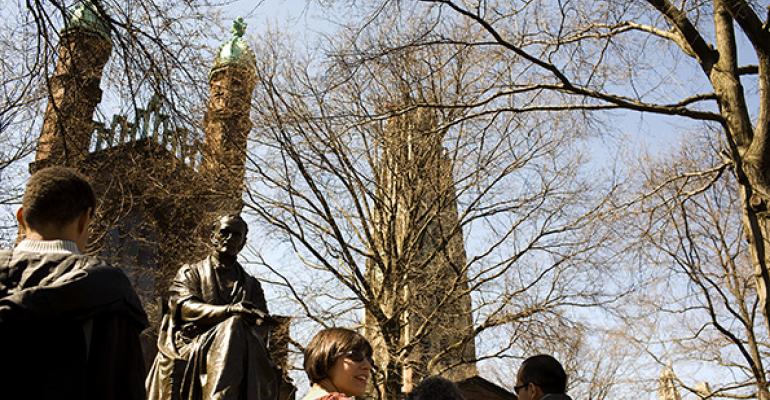Most people agree that higher education is worthy of philanthropic support. In 2016, nearly half of all donations from the largest 50 donors in the United States went to colleges and universities. That same year, U.S. colleges and universities accepted $41 billion in contributions.
In early 2015, higher education endowments totaled more than $535 billion, with the top 120 schools holding 75 percent of that sum. Some schools—including Harvard, Stanford, Yale, University of Texas and Princeton—have endowments of more than $20 billion apiece. This is larger than the gross domestic products of many countries.
Controversial Gladwell podcast
Last year, Malcolm Gladwell (author of best sellers such as "Tipping Point," "Blink" and "Outliers") spoke about educational philanthropy in a controversial podcast called “My Little Hundred Million.” In this 40-minute discussion, Gladwell describes the impact of the donation of $100 million by industrialist Hank Rowan to Glassboro State College in New Jersey for an engineering department and building. At the time, Glassboro was nearly bankrupt.
In 1992, this donation gained attention as the largest-ever single gift to a public college or university. Since then, more than 175 gifts of $100 million or more have been given to higher education institutions—mostly to schools with high name recognition and big endowments.
Even though Rowan’s alma mater (Massachusetts Institute of Technology) was in the middle of a $750 million fundraising campaign, his precedent-setting gift went to a college that served blue-collar students. In-state tuition at Glassboro State is about $9,000 a year. Ninety-five percent of the engineering school’s graduates get jobs in their field.
Soccer teams versus basketball teams
In his podcast, Gladwell argues that much of higher education philanthropy is “going to the wrong places for the wrong reasons.” He argues that donors should focus on helping smaller but still effective institutions that are more in need of the help. He calls these “weaker links.”
In certain sports, according to Gladwell, weaker players hurt a team’s chances of winning more than stronger players help. In soccer, for example, there are fewer chances to score—so mistakes by weaker players have a proportionally higher impact. In basketball, there are many chances to score—and one superstar player can often make up for the weak links on the team. Soccer is a “weak link” game and basketball is a “strong link” game.
In his podcast, Gladwell says, “American society is really soccer. We’re so independent and we need so many perfect passes to score a goal, that our challenge is our weak link, not our strong link. What matters is how good our 11th player is, not our first.” Further, he says that the United States today “does not suffer from an excessive egalitarianism; it suffers from the opposite problem. Its strong links have never been stronger.”
Spreading Opportunity
In fairness, some of the money in higher education endowments supports scholarships for students who otherwise wouldn’t be able to attend the more prestigious schools. Gladwell points out, however, that those scholarships are often awarded to the “best and brightest” or “elite” students. He also notes that the huge endowments of major universities are already sufficient to cover scholarship costs. See, for example, Phil Knight’s $400 million gift to Stanford or Ken Griffin’s $150 million gift to Harvard.
Gladwell’s critics also point out that higher-education donations sometimes fund cutting-edge research in medicine or science—resulting in major breakthroughs that benefit society. This is a valid observation.
As a proponent of strategic philanthropy, I’m always grateful when wealthy individuals elect to make donations to do good work in society—whether in the area of higher education or elsewhere. But Gladwell makes a strong case. By funding higher education for people who aren’t at the top of the academic or economic pyramids, philanthropy can do the most good for our country. It’s like helping average soccer players improve to make a stronger overall team.
We need more philanthropists like Hank Rowan who carefully consider funding higher education not in the stratosphere, but at the level of deserving community, technical and state colleges.
Bruce DeBoskey, J.D., is a philanthropic strategist working across the U.S. with The DeBoskey Group to help families, businesses and foundations design and implement thoughtful philanthropic strategies and actionable plans.





